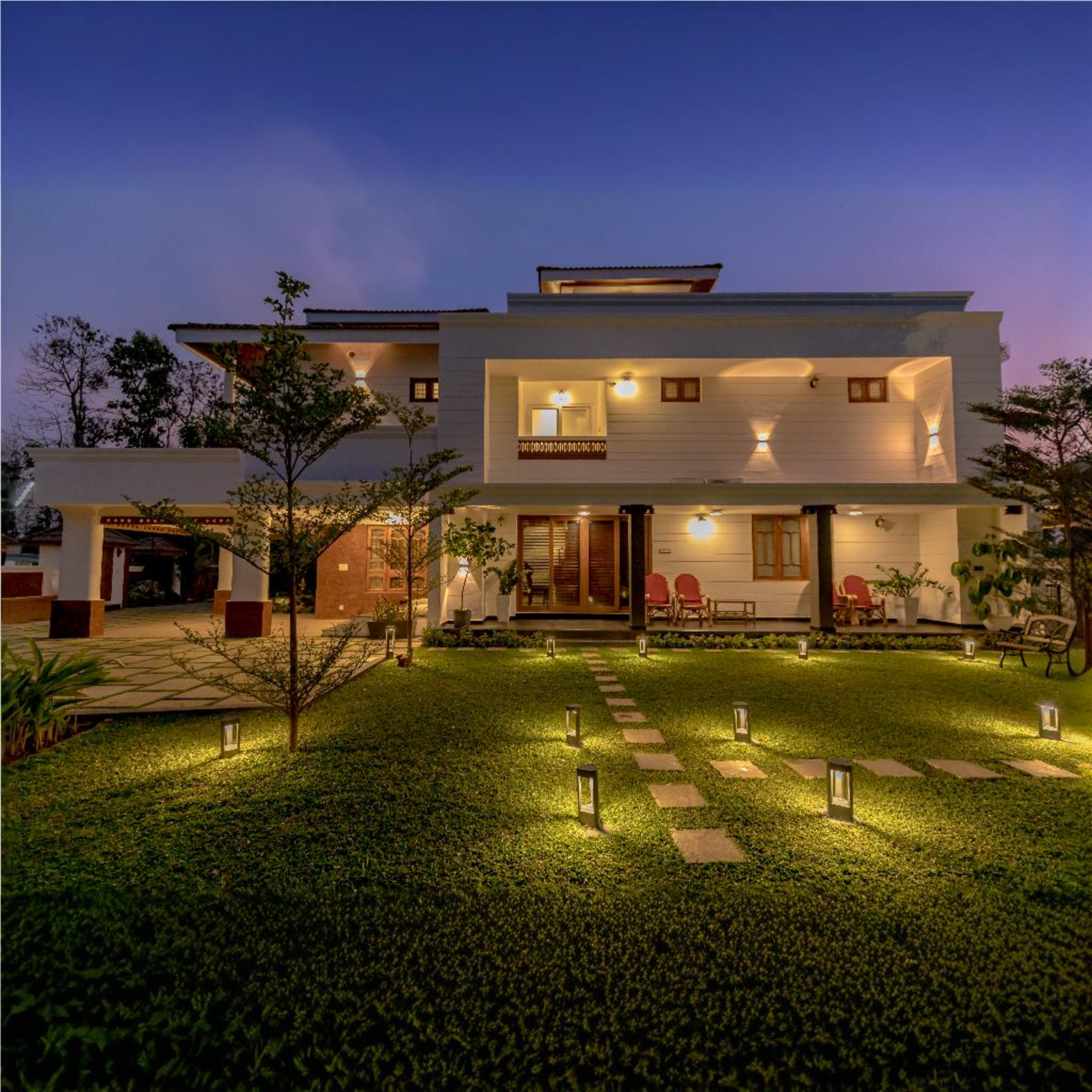Sustainable architecture is not just a trend; it’s a movement toward a healthier planet and a more responsible way of living. As the world faces the challenges of climate change, resource depletion, and environmental degradation, sustainable architecture has become crucial in reshaping how we build and design homes, offices, and entire communities. In this blog post, we’ll dive deep into the principles of sustainable architecture, its importance, and how we can design and build with the environment in mind to ensure a greener tomorrow. 🌱
What is Sustainable Architecture? 🏛️
Sustainable architecture, also known as green architecture, refers to the practice of designing buildings and spaces that are energy-efficient, environmentally friendly, and resource-conscious. The goal is to reduce the ecological footprint of buildings by minimizing energy consumption, utilizing sustainable materials, and integrating renewable energy systems, all while ensuring the comfort and well-being of the inhabitants.
Sustainable architecture involves a holistic approach to design that takes into account the long-term environmental impact of a building, not just its immediate aesthetic or functional needs. By focusing on the lifecycle of materials and energy use, sustainable architects aim to create buildings that are resource-efficient, low-maintenance, and adaptable to changing environmental conditions.
Sustainable architecture is reshaping the future of building design by focusing on eco-friendly practices that reduce energy consumption, minimize waste, and promote healthier living spaces. In this blog post, we dive deep into the principles of sustainable architecture, the benefits it offers, and how you can incorporate green design strategies into your next project. Learn how sustainable buildings are transforming the way we live and work for a greener, more resilient tomorrow. 🌍💚
The Core Principles of Sustainable Architecture 🌱
-
Energy Efficiency ⚡ One of the primary goals of sustainable architecture is to reduce the energy consumption of buildings. This can be achieved through strategic design elements such as passive heating and cooling, energy-efficient appliances, and smart insulation. High-performance windows, solar panels, and natural ventilation systems also contribute to minimizing a building’s energy footprint.
-
Sustainable Materials 🪵 Using materials that are renewable, recyclable, and locally sourced is crucial in sustainable design. Materials such as bamboo, reclaimed wood, and recycled steel can be used to minimize environmental impact while ensuring structural integrity. Sustainable materials also include low-VOC (volatile organic compounds) paints and finishes, which improve indoor air quality.
-
Water Conservation 💧 Sustainable architecture emphasizes the importance of water conservation. This can be achieved through rainwater harvesting systems, low-flow fixtures, and xeriscaping (landscaping that requires minimal water). These practices help to reduce the strain on local water supplies and ensure that buildings are more self-sufficient.
-
Indoor Air Quality (IAQ) 🌿 Creating healthy indoor environments is a significant aspect of sustainable architecture. By using non-toxic materials and ensuring proper ventilation, architects can improve indoor air quality and the overall well-being of residents. Good IAQ also includes the use of air filtration systems and natural ventilation strategies to reduce reliance on mechanical air conditioning.
-
Adaptability and Resilience 🌍 Sustainable buildings are designed to be resilient to environmental changes and adaptable to evolving needs. This includes designing structures that can withstand extreme weather events, changing temperatures, or shifting climates. Green roofs, for example, not only reduce the heat island effect but also help buildings become more energy-efficient by providing natural insulation.
Benefits of Sustainable Architecture 🌿
-
Reduced Environmental Impact 🌎 The most obvious benefit of sustainable architecture is its positive impact on the environment. By reducing energy consumption, using renewable materials, and conserving water, sustainable buildings help to lower carbon emissions and mitigate the effects of climate change.
-
Cost Savings 💸 Sustainable buildings often result in long-term financial savings. Energy-efficient systems and materials reduce utility bills, while water-saving technologies minimize the cost of water consumption. Over time, these savings can outweigh the initial investment in green design.
-
Improved Health and Well-being 🧘♀️ Sustainable architecture prioritizes the health and comfort of its occupants. With a focus on natural lighting, better ventilation, and non-toxic materials, sustainable buildings create healthier environments that contribute to the physical and mental well-being of those who live or work in them.
-
Increased Property Value 📈 As sustainability becomes a higher priority for homebuyers and tenants, properties with green features often see an increase in value. Energy-efficient homes and eco-friendly buildings are becoming highly sought after, making sustainable architecture an attractive investment.
-
Regulatory and Compliance Advantages 📜 With growing awareness of climate change and sustainability, many governments and municipalities are introducing regulations that require energy-efficient and environmentally friendly building practices. Sustainable buildings are more likely to comply with these regulations and can even benefit from tax incentives or grants.
Sustainable Design Strategies to Incorporate in Your Next Project 🏗️
-
Passive Design 🌞 Passive design involves creating buildings that make the most of natural resources like sunlight and wind for heating, cooling, and lighting. By positioning windows to maximize solar gain in winter and shading them in summer, passive design reduces the need for artificial heating and cooling systems.
-
Solar Energy ☀️ Solar panels are one of the most popular renewable energy sources for sustainable buildings. Installing photovoltaic panels on roofs or facades can drastically reduce energy consumption by generating electricity directly from sunlight. Solar power systems can also be paired with energy storage systems to ensure a constant energy supply.
-
Green Roofs and Walls 🌱 Green roofs and living walls are great for insulating buildings, managing stormwater, and improving air quality. These green spaces can also help combat the urban heat island effect, where cities become significantly warmer than surrounding rural areas due to human activities and infrastructure.
-
Smart Technology Integration 📱 Smart home technologies are playing an increasing role in sustainable architecture. Devices such as smart thermostats, lighting systems, and energy monitoring tools can help homeowners reduce their energy consumption and make more informed decisions about their use of resources.
-
Building with Nature 🌳 Biophilic design, which seeks to connect people with nature, has become an integral part of sustainable architecture. This can be achieved through the use of natural materials, indoor plants, and design elements that bring the outdoors inside.
The Future of Sustainable Architecture 🔮
As technology advances and the urgency of addressing environmental concerns grows, the future of sustainable architecture looks promising. Emerging innovations such as zero-energy buildings, carbon-negative construction materials, and advanced green technologies will continue to push the boundaries of what is possible in eco-friendly design.
Moreover, the global push for sustainability in both the private and public sectors is ensuring that sustainable architecture will remain at the forefront of the construction industry. From smart cities to eco-friendly homes, sustainable architecture is shaping the future of how we build and live.
Conclusion: Designing a Greener Tomorrow 🌍
Sustainable architecture is more than just a design trend; it’s a necessity for a better future. As the world continues to grapple with climate change and resource depletion, the role of architects and designers in creating environmentally responsible spaces becomes even more critical. By embracing sustainable design principles and integrating green technologies, we can all contribute to a more sustainable, resilient, and healthier world.
Whether you’re designing a new home, renovating an existing space, or simply looking to learn more about green building practices, sustainable architecture offers numerous benefits for the environment, your finances, and your well-being. It’s time to take action and start building for a greener tomorrow! 🌱





